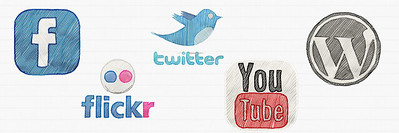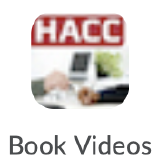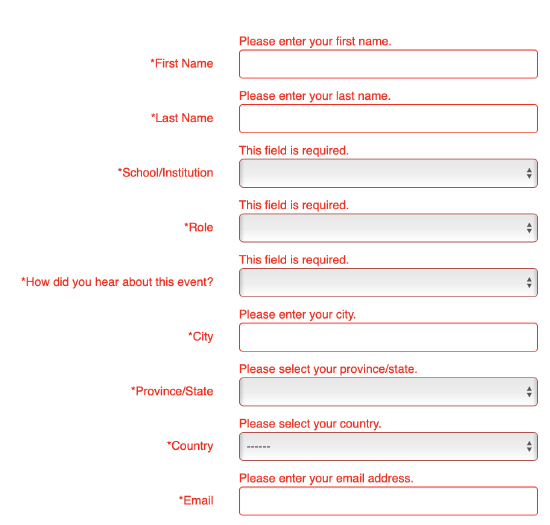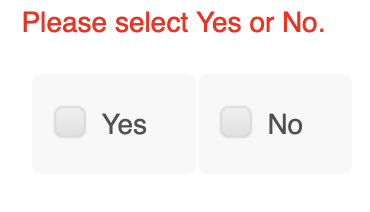12: Technology-Mediated Business Writing
- Page ID
- 89528
Chapter Objectives
The purpose of this chapter is to:
- Explain the meaning and use of computer-mediated communication (CMC)
- Describe how businesses can use social media to connect with stakeholders
- Explain the appropriate use of netiquette
- Distinguish the purposes of text messaging and microblogging in business communication
- Provide accessibility composition and design elements to CMC
Computer-Mediated Communication: Writing for New Media Technologies and Media Platforms
Writing technologies provide business writers and stakeholders with opportunities to interact with and react to information quickly. The convenience of communicating quickly and having multiple communication channels has its advantages and disadvantages. Although businesses have used writing technology for over 20 years, and reliance increases every year, it is still very easy for information to be misconstrued and misinterpreted. Therefore, it is important to understand how to communicate effectively in a technology-based communication medium. This process is known as computer-mediated communication (CMC).
CMC focuses on interactive and interconnectedness between the medium and the text; each is equally important. Instead of thinking of literacy solely as reading and writing in the traditional form, CMC focuses on reading and writing that is transformed by technology through branding, influencing, liking, identifying, collecting, sending, receiving, collaborating, storing, sharing, and designing.
The role of CMC is to heighten the following areas:
- The connection between words, images, and design
- The connection between verbal and visual texts
- The ability to include diverse and inclusive texts
These areas focus on text and images equally:
- Readability (the placement of text and images heightens context)
- Clarity (the text results in clear structure)
- Modernity (the use of images that results in newness, authenticity, and inclusivity)
CMC connections the media platform. The media platform is the means by which stakeholders obtain the information.
New media is a term used to describe the technologies used to transmit information to stakeholders, locally and globally. At a low-cost threshold, it has the potential to reach millions with just a click or a tap.
Examples of New Media
|
Source: Photo by Austin Distel on Unsplash |
Just as a memo is a medium for employees within a company, social media are for users all over the world to share, distribute, and collaborate. The immediacy of social media can be a positive aspect because business representatives can monitor social media feeds within moments of a post to gather the reactions of stakeholders.
Social media platforms such as Facebook are an important means of communication today. Increasingly, businesses are using CMC to communicate specific topics to employees, clients, and customers. Companies use Facebook to connect with customers and persuade visitors to become customers and "like" the company. Companies can track the number of "likes" and "dislikes" and visitor comments to monitor the success of the Facebook page in providing usable content for customers. Companies use Facebook to reach customers older than 30-years-old.
Facebook combines content and visuals to connect themes. For example, the Facebook page for Sprouts Farmers Market Healthy Grocery store provides text about specialty products, pictures of appetizing dishes, and coupons. It features promotions and special pricing, and nutrition information on featured meals. Each topic is supported with visuals and videos.
Stakeholders may participate in supporting or criticizing information sent and products distributed by companies by using Twitter to tweet or retweet a message; businesses monitor the success of a message or product based on the number of tweets, retweets, and comments.
TikTok and Instagram rely more on images and short videos to communicate messages. Companies can use TikTok and Instagram to introduce new products and to reinforce to customers, especially customers younger than 30-years-old, the need to purchase those products.
Social media users expect current information within their fingertips and keystrokes. A company that uses social media means it is committed to having employees available to post and respond to information multiple times a day.
Using an effective tone, or attitude, is a necessity in all business documents, perhaps even more when writing for social media because it can be impersonal and easy to send without reviewing its efficacy for the audience. Despite how quick and easy it may seem to send a comment via a social media platform, it is important to complete the entire writing process before sending. Answer these questions to help you compose computer-mediated communication.
- Who is the primary, secondary, watchdog, and gatekeeper audiences?
- How can you reach each audience?
- What are the best ways to grow the CMC audience?
- What information do you need to include in the response?
- Do they follow your company?

Source: Sean MacEntee – social media – CC BY 2.0.
Ethical Consideration
We create personal pages, professional pages, post messages, and interact with communities via mediated technologies as a normal part of our careers, but how we conduct ourselves can leave a lasting image. The video you posted on Tiktok may have been seen by your potential employer, or that nasty remark in a post may come back to haunt you later. Your behavior and writing choices should hold the same professional and ethical standards, regardless of medium or location.
Document and Cite CMC Content
Tweets, Snapchat, Instagram, and Facebook are such influencers of public discourse that each has citation and documentation formats in APA (American Psychology Association) and MLA (Modern Language Association). When citing new media, determine the individual contributor. Acknowledge the original contributor when posting and incorporating content from all social media and media platforms. Do not retweet if you do not agree with the content or are unfamiliar with the originator of the tweet.
How can you tell whether information comes from a reliable source? It is important to distinguish between facts and opinions. The criteria for determining the reliability of a information from CMC is the same as the criteria you should measure for any other business document.
Visit APA Style for examples of citing and documenting information from social media.
Considerations for Composing Content On CMC
Skilled business writers consider CMC valuable tools to connect with stakeholders; they understand CMC is a large part of our communication landscape To support this, there are primary compositional and design elements for CMC. The following sections provide an overview of tips for effective writing and designing of CMC, specifically:
- Netiquette
- Digital icons
- Texting
- Microblogs
- Webpages
- Accessibility
Incorporating Netiquette in CMC
Netiquette refers to a social code of polite conduct. Here are standards to follow for proper netiquette when engaging with CMC. Following these tips will assist you in your success as a writer of CMC.
- Follow the rules for capitalization to all computer mediated communication. ALL CAPITAL LETTERS DENOTE SHOUTING in CMC
- Focus on composing details and examples to support your points. Humor, irony, and sarcasm do not always interpreted well in CMC
- Use a tone (attitude) that is respectful to stakeholders, even when you disagree
- Take a moment to review the information before sending or posting
- Limit use of abbreviations and jargon
- Post language and visuals that are diverse and inclusive
- Honor professional honesty by attributing sources
- Adhere to ethical writing standards
- Acknowledge stakeholders by their preferred name (for individuals) or collectively (for multiple stakeholders)
- Review the information to ensure it is free from errors, biases, and stereotypes
From an Interpersonal Business Communication Perspective
Avoid using social media to deliver negative news.
Using Digital Icons
CMC has resulted in a new writing style with the incorporation of emojis and emoticons. An emoji is a digital icon used in social media to express ideas and emotions. An emoticon is a digital icon used in social media to represent a facial expression. The first recorded use of emoticons in business writing was in 1982 by computer scientist Scott E. Fahlman at Carnegie Mellon University. He used ;-) and ;-( on computer science discussion boards (Krohn, 2004). Each emoji and emoticon has its own meaning and can easily lead the reader to a sentimental or emotional response instead of a neutral or professional response. From a business perspective, use digital icons sparingly and for a direct purpose, to a concrete audience.

Source: Photo by Domingo Alvarez E on Unsplash
Texting Methods and Guidelines
Whichever mobile device you use, written communication in the form of brief messages, or texting, has become a common way to connect. It is useful for short exchanges, and is a convenient way to stay connected with others when talking on the phone would be difficult. Texting is not useful for long or complicated messages, and careful consideration should be given to the audience who receives the text.
Texting can be a great tool for connecting while on the go; however, consider your audience and your company to determine whether it is an effective method of communication. If so, be cognizant of word choice, breadth, and abbreviations that will explain your message.
Tips for Effective Business Writing Texting
- Know your recipient; “? % dsct” may be an understandable way to ask a close associate what the proper discount is to offer a certain customer, but if you are writing a text to your boss, it might be wiser to write, “what % discount does Murray get on $1K order?”
- Anticipate unintentional misinterpretation. Texting often uses symbols and codes to represent thoughts, ideas, and emotions. Given the complexity of communication, and the useful but limited tool of texting, be aware of its limitation and prevent misinterpretation with brief messages.
- Contacting someone too frequently can border on harassment. Texting is a tool. Use it when appropriate but don’t abuse it.
- Unplug yourself once in awhile. Do you feel constantly connected? Do you feel lost or “out of it” if you don’t have your cell phone and cannot connect to people, even for fifteen minutes? Sometimes being unavailable for a time can be healthy. Everything in moderation, including texting.
Analyzing Texting Audiences Based on Generational Differences
|
Is it possible to tell how old someone is by how she, he, or they type a text? If the person uses a thumb while holding the digital device, that person may have been raised on video games and be adept at one-handed interfaces. If someone holds the digital device with one hand and types the text with the other, he, she, or they may be over thirty, or may be less comfortable with some technological devices. If the person is a one-hander, and knows all the abbreviations common to texting, you may be able to use similar codes to communicate effectively. If the person is a two-hander, you are better off using fewer words and spelling them out. Of course, there is no actual correlation between input and age, but it is a useful example to consider your audience when writing a text message. |
Source: Photo by Maxim Ilyahov on Unsplash |
Ethical Consideration
Texting and driving puts lives and well being at risk.
Writing Microblogs
A microblog (Kinonen) is a short blog that may be less formal than a letter or memo. It contains short paragraphs and multiple links. A microblog may serve as a promotional piece to introduce a larger CMC project. Examples of sites that include microblogging are: Twitter, Instagram, and Facebook. More businesses and organizations are using microblogs as a communication tool. Often, microblogs are targeted to specific consumers instead of the general public. The same rules that apply to other forms of CMC writing also apply to microblogs. For example,
- Avoid using all caps. Capital letters are used on the Internet to communicate emotion or yelling and are considered rude.
- Test links. If you include a link, test it to make sure it is complete.
- Use a good format. Include line breaks between sentences or divide your message into brief paragraphs for ease of reading. A good microblog should get to the point and conclude in three short paragraphs
- Reread, revise, and review. Catch and correct spelling and grammar mistakes before publishing.
- Follow up with consumers who leave feedback.
Writing Webpages
The Web is one of the primary means of communication today. Webpages are a collection of data that pertains to a concrete subject that appear on a website. Businesses use websites to communicate technical information to employees, clients, and customers. The homepage of a website often determines how long a user will engage with it. If information is difficult to find or visually unappealing, users will disengage. Effective webpages will begin by including these features.
- Company branding, which includes the name, logo, and visuals, that represent the company
- Statement that explains the mission of the company
- Statement that explains the purpose of the website
- Design that is uncluttered
- Color scheme that follows a color palette
- Menu or table of contents that lists the contents of the entire website
- Link titles that serve as a transition from one page to the next
- Link titles that inform users of the information that will follow
- Content that explains the action you want the viewer to take
- Perspective that provides explanations instead of narration
- Elements that unify the entire website (title, border, colors, structure, design)
Writing and Designing for Accessibility
Accessibility and universal design go together. Your goal for making a document accessible is to incorporate design and compositional techniques that provide all users with the ability to understand, use, maneuver, and navigate content. Accessibility features and universal design consider users' diverse abilities, technological knowledge, and communication devices (viewing or composing CMC on a mobile device, laptop, or computer).
Here are techniques to follow as you compose and design all elements of CMC.
Writing for Accessibility (WAI)
As with any business context, CMC content must be informative and detailed, yet concise.
- Provide informative page titles that are short and descriptive to guide readers
- Provide an introductory statement and graphic welcoming the reader to the the site
- Compose headings that inform users of the content in that section
- Include headings and subheadings for structure (parallelism and agreement) and organization. Expand headings to compose for clarity and to inform
- Write meaningful link titles by describing the content. Instead of "click here" replace with a title that explains what will appear: "Ways to resolve conflict"
- Write meaningful text for icons to ensure everyone understands its context
Example:

- Create transcripts for audio such as podcasts and captioning for multimedia, such as audio and video
- Conduct test protocols to ensure readers of various abilities may access content
Designing for Accessibility (WAI)
Note: The following screenshots serve as examples of designing accessible content. The screenshots are not interactive.
- Contrast colors between foreground and background for all elements--images, buttons, text, etc. For example, use a dark font on a light background.
- Use labels titles in addition to color to convey meaning.
- Provide clear placement and labeling for forms and feedback sections. Alert users when they need to complete a field.

Source: Cascadia OER Registration Form
- Ensure interactive features are clear and easy to use; pay attention to style and positioning.

Source: Packback
- Provide clear labels and instructions.


Source: Cascadia OER Registration Form
- Use columns, boxes, raged right margins to reduce clutter.
- Create designs for different viewing sizes; ensure readability for mobile devices, laptops, and computers points.
- Include visuals and media alternatives in your design:
- Captions for tables
- Icons
- Descriptions of videos
- Instructions or descriptions
- Graphics
These features provide consistency in design by setting a design and content expectation for the reader. Being deliberate in your composition and design is imperative to achieve effective computer-mediated communication through new media.
Ethical Design Consideration
Limit the features that start automatically. Any interactive features must be easy to find and disable, such as music or movement, just in case the user is distracted by it.
Conclusion
Technology-mediated writing is a mainstay for business communication. For readability and usability, it is important to design engaging and informative Computer Mediated Communication.
CMC is used to convey and interpret information, depict real situations, and to clarify numerical and statistical data. CMC should convey information that your audience needs such as purpose, design, placement, and explanation to:
- Connect stakeholders with a product and service
- Engage stakeholders in interactive ways
- Demonstrate how something works
- Explain and persuade and emphasize specific points
- Present how an object appears
- Emphasize connections between information
Representation in CMC must be inclusionary. Use images of people very carefully to avoid forms of misrepresentation or exclusion. Specifically, misrepresentation that is based on race, gender, sexual orientation, ability, or any other aspect of identity. Remember to pay careful attention to the way your text and visuals can subtly communicate information that you may not intend.
General Technology-Mediated Business Writing Tips
- A text message is a brief written message sent and received using a digital device. It is useful for informal, brief, time-sensitive communication.
- Social customs that exist in traditional, live, human interaction also influence the rules and customs by which we interact with each other in the online environment.
- Enhance CMC by providing more information in a visual display to:
• Demonstrate
• Emphasize
• Present precise information
• Find connections between information
- Introduce and/or label visual elements; explain its importance.
- Answer these questions as you draft documents for CMC:
- How am I engaging my audience?
- Is the information clear and concise?
- What are some advantages and disadvantages to using writing technologies?
- What information have I included?
- What readability techniques were used for the web page?
- Why was this design incorporated?
- Why were particular colors used?
All links live as of July 2021.
References
Cascadia Open Education Summit. (2021 registration) https://events.eply.com/2021Cascadia...t/virtual.aspx
Krohn, F. (2004). A generational approach to using emoticons as non-verbal communication. Journal of Technical Writing and Communication, 43, 321-328.
"Microblogs" by Amber Kinonen is used under CC-BY.
Web Accessibility Initiative (WAI). Tips for Getting Started with Web Accessibility. 20 September 2019. https://www.w3.org/WAI/design-develop/
This work “Technology-Mediated Business Writing” is a derivative of “ENGL 145 Technical & Report Writing” by Bay College and Content Creators, used under Creative Commons Attribution 4.0 International License. “Technology-Mediated Business Writing” is licensed under CC BY by Valerie A. Gray.



